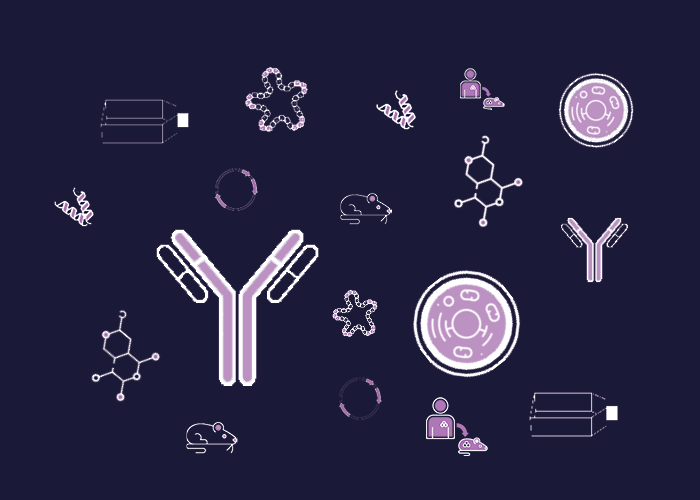Cat. #152163
Anti-Cytochrome P450 1A2 [3B8C1]
Cat. #: 152163
Sub-type: Primary antibody
Unit size: 100 ug
Availability: 10-12 weeks
Target: Cytochrome P450 1A2 (CYP1A2)
Class: Monoclonal
Application: IHC ; WB
Reactivity: Human
Host: Mouse
£300.00
This fee is applicable only for non-profit organisations. If you are a for-profit organisation or a researcher working on commercially-sponsored academic research, you will need to contact our licensing team for a commercial use license.
Contributor
Inventor: Ayham Alnabulsi
Institute: Vertebrate Antibodies Limited
Tool Details
*FOR RESEARCH USE ONLY (for other uses, please contact the licensing team)
- Name: Anti-Cytochrome P450 1A2 [3B8C1]
- Research fields: Cancer;Cell signaling and signal transduction;Metabolism;Tissue-specific biology
- Clone: 3B8C1
- Tool sub type: Primary antibody
- Class: Monoclonal
- Conjugation: Unconjugated
- Strain: Balb/c
- Reactivity: Human
- Host: Mouse
- Application: IHC ; WB
- Description: Cytochromes P450 are a group of heme-thiolate monooxygenases. In liver microsomes, this enzyme is involved in an NADPH-dependent electron transport pathway. It oxidizes a variety of structurally unrelated compounds, including steroids, fatty acids, and xenobiotics. Most active in catalyzing 2-hydroxylation. Caffeine is metabolized primarily by cytochrome CYP1A2 in the liver through an initial N3-demethylation. Also acts in the metabolism of aflatoxin B1 and acetaminophen. Participates in the bioactivation of carcinogenic aromatic and heterocyclic amines. Catalizes the N-hydroxylation of heterocyclic amines and the O-deethylation of phenacetin.
- Immunogen: Rat cytochrome P450 proteins
- Isotype: IgG1 kappa
- Myeloma used: P3X63Ag8.653
- Recommended controls: IHC: formalin-fixed, paraffin-embedded normal liver sections; western blot: recombinant P450
Target Details
- Target: Cytochrome P450 1A2 (CYP1A2)
- Tissue cell line specificity: IHC: formalin-fixed, paraffin-embedded normal liver sections; western blot: recombinant P450
- Target background: Cytochromes P450 are a group of heme-thiolate monooxygenases. In liver microsomes, this enzyme is involved in an NADPH-dependent electron transport pathway. It oxidizes a variety of structurally unrelated compounds, including steroids, fatty acids, and xenobiotics. Most active in catalyzing 2-hydroxylation. Caffeine is metabolized primarily by cytochrome CYP1A2 in the liver through an initial N3-demethylation. Also acts in the metabolism of aflatoxin B1 and acetaminophen. Participates in the bioactivation of carcinogenic aromatic and heterocyclic amines. Catalizes the N-hydroxylation of heterocyclic amines and the O-deethylation of phenacetin.
Applications
- Application: IHC ; WB
Handling
- Format: Liquid
- Concentration: 0.9-1.1 mg/ml
- Unit size: 100 ug
- Storage buffer: PBS with 0.02% azide
- Storage conditions: -15° C to -25° C
- Shipping conditions: Dry ice
References
- Murray et al. 2010. Histopathology. 57(2):202-11. PMID: 20716162.
- Profiling the expression of cytochrome P450 in breast cancer.

![Anti-Cytochrome P450 1A2 [3B8C1]](https://cancertools.org/wp-content/uploads/3644ce59-78ce-47da-a1ec-8c19a35b8662.jpg)




